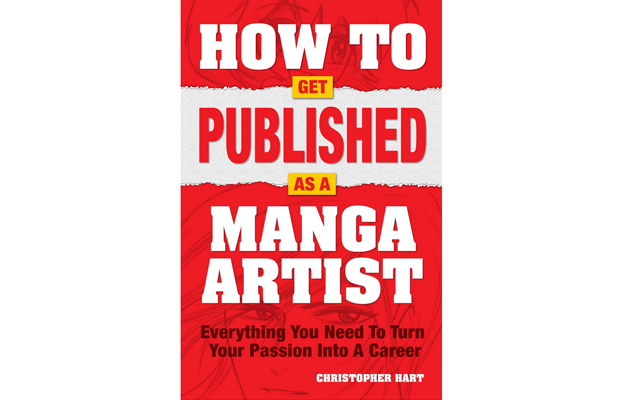Even if you’ve never heard of Christopher Hart, you’ve seen his books. His “How to Draw Manga” series is available in 20 languages. Spanning shoujo, shounen, and other niche manga art styles, the series has sold more than 3.5 million copies in the U.S alone.
When I Googled Hart’s name, I wasn’t surprised to see mixed reviews. While Hart has his fair share of devoted fans, the truth remains that Hart is an American, and his manga style is sometimes critiqued for being “not Japanese enough.” Given that this is a challenge any manga artist outside of Japan will face, Hart has found success nonetheless, and this makes him uniquely qualified to talk realistically about this topic.
Last week, Hart reached out to me about reviewing his latest book, How to Get Published as a Manga Artist: Everything You Need to Turn Your Passion into a Career. I finished the book in about an hour on the plane home from Las Vegas. It was a quick, easy read. Here’s what I thought of this guide:
What Works
Hart has worked as an illustrator, author, and teacher with print, broadcast, and Web platforms. Years of actual industry experience has made him a realist.
Hart doesn’t vaguely tell you to “go for your dreams,” but instead shares some tough truths. Art school is a hard sell, especially if there isn’t a high success rate for graduates. And as much as you love it, fan art doesn’t belong in a portfolio—it shows nothing about your own ability to design a character, and publishers will cringe at the perceived copyright violations.
Since this book assumes you already know how to draw, most of the best advice is about the other things successful artists do. They treat their careers like businesses. They get good with numbers, with legal terms, and protecting their rights either by themselves or with an agent. They keep a “traffic log,” a list of which pitches they’ve sent to whom, when. Most of the book goes into detail about the specialized nitty-gritty of running a manga business.
By far, Hart is most helpful when he’s giving actual examples of cover letters, graphic novel proposals, and talking points for networking at manga conventions. These are scripts built on having seen beginners do the same thing incorrectly too many times. It’s clear that when Hart advises, he’s drawing from his years of experience in the field.
Of course, my favorite part of the book is Hart’s advice on specialization, which is exactly what I advise to potential Otaku Journalists:
“Is there a risk of getting pigeonholed? One would think so. One would also hope so. Specialization is a strength to be exploited, not a problem to be solved… Do you believe that Tsugomi Ohba, author of the famously popular graphic novel Death Note, would have a better career if he also published chibi-style works?”
What Doesn’t
From the very first sentence, it’s apparent that Hart knows what he’s talking about. However, in some sections he has trouble bringing the reader up to his level.
Some of Hart’s advice is a little vague for people with zero experience. He suggests you build an online portfolio by “setting up an FTP site.” As a technology instructor, I could give a whole class on what that is and how to do it, but here it’s just a sentence. Other advice like, “dress like you’re successful” or “live in a major publishing hub” is almost cryptic to me.
It’s almost as if Hart has lived this for so many years, he has a difficult time putting himself back in a beginner’s shoes. Fortunately his email response time is quick and I’m sure readers can just ask him when something isn’t clear. He’s certainly made himself available to me. Perhaps if enough people ask the same questions, he’ll add an addendum to the book.
In Summary
Hart didn’t write this book to make manga seem like an easy career. It’s impossible to follow his advice without putting a lot of hard work behind it.
Still, Hart doesn’t want you to settle. He shows you how to protect your rights, to be choosy with publishers, and to never, ever work for free, even as a beginner.
In any creative industry, I think it’s important to have a mentor you can look up to. But short of that, I’d recommend checking out this book. It’s a guide written by somebody who’s been there, seen the common mistakes, and risen above them. Hart’s artistic style may be disputed on the Internet, but his success as a manga artist is not. Aspiring manga artists, writers, and even people interested in selling products at conventions can all learn something from him.
